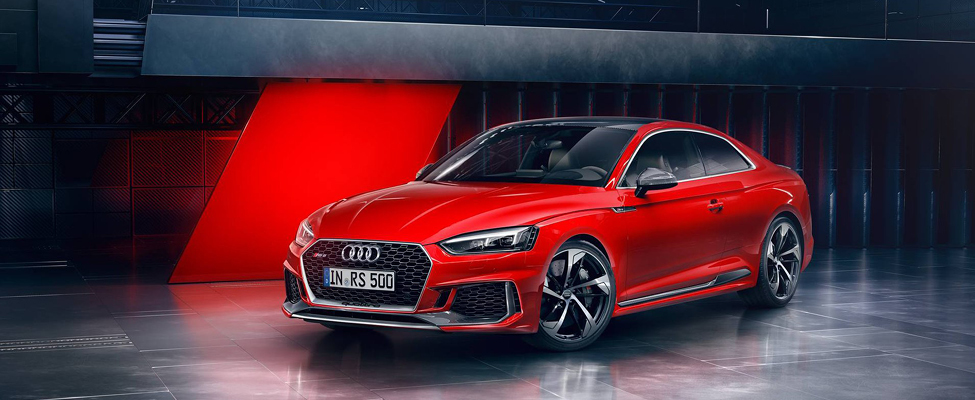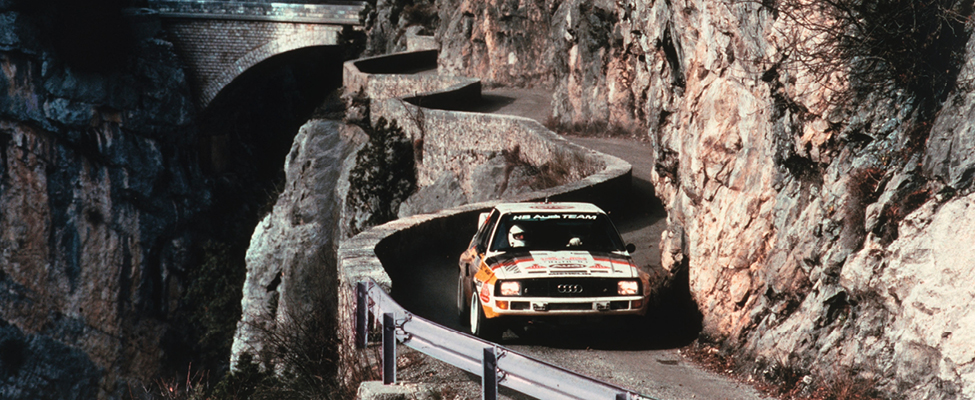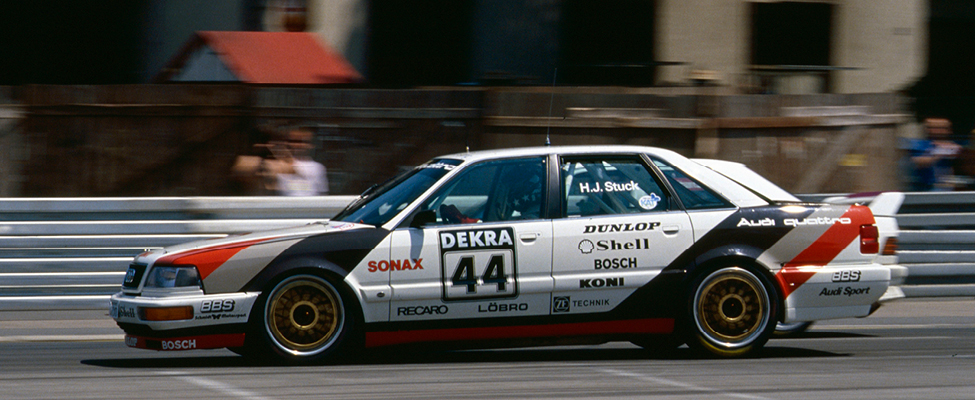The story of quattro: how Audi transformed all-wheel drive into a performance enhancer
The 2018 Audi RS 5 is an impressive machine. A quick look at a spec sheet reveals impressive performance figures – courtesy of a 2.9 liter TFSI bi-turbo V6 engine, an 8 speed Tiptronic transmission with steering wheel-mounted gear change paddles, and adjustable driving modes. Perhaps the most surprising of the RS 5’s features, however, is how it stands out from its rear-wheel driven competitors. Effectively, the RS 5 can put down every one of its 444 horsepower through all four wheels, thanks to a highly advanced version of Audi’s quattro system.

This unconventional approach to designing a sportscar may surprise. However, Audi has long excelled at challenging the status quo, and its quattro all-wheel drive system has not only become legendary, but also a key ingredient in many outstanding Audi sports cars. This philosophy can trace its roots back to the original Audi Quattro.
A legend is born
The notion that four-wheel drive vehicles could go much further off the beaten path was long known, but such systems were heavy and were never considered for use in performance models. However, in the late 1970s, Audi engineers came up with a plan to make a four-wheel drive system that would accentuate not only the capabilities of a vehicle but also its outright performance. This was done by sending power to all four wheels while keeping weight at a minimum, thanks in great part to eliminating a heavy centre differential by integrating it into the rear of the gearbox. The idea worked, and the original Audi Quattro – often referred to as Ur-Quattro – was born in 1980. It would quickly become a legend, and it owes a great deal of its fame to the success of its rally-going version.

Rallying has a new king
Rally cars didn’t use all-wheel drive at the time, and Audi quickly saw the benefit of using the technology in the World Rally Championship. Audi entered its Quattro in the 1981 Championship, and dominated right out of the gate, collecting a combined four Manufacturers and Driver’s World Titles over the following years. This string of success was spearheaded by legendary drivers, among them Michèle Mouton – the first-ever woman to win a World Championship rally in 1981, at the wheel of a Quattro. Audi would wind down its domination of rallying by winning the legendary Pikes Peak hill climb three times in a row in record time with the Sport quattro. Talk about taking over! Needless to say, the Quattro changed the world of rallying and instantly became an icon of the sport.

The Quattro also powered Audi’s public relations: the road-going model and the rally version jointly demonstrated the prowess of Audi engineers at developing state-of-the-art technology to produce exceptional road cars and race cars. It cemented Audi’s standing as a class-leading manufacturer. In fact, the Quattro was so instrumental in Audi’s history that further versions of the all-wheel drive system have used a lowercase “q” to differentiate the quattro system from the original vehicle.
All-wheel drive for the racetrack

Upon Audi’s success on the rally stage, the challenge turned to conquering the race track in other classes of motorsport. Notably, they would go on to be the first to win back-to-back championship titles in the highly-contested German Touring Car Masters with the V8 quattro DTM. Audi’s contestant was the only one of the series equipped with all-wheel drive, and it is famously claimed that one of their championship-winning drivers, Hans Joachim-Stuck, never spun in all 22 of his races. Following multiple successes in touring car racing, Audi would again showcase the advantage of all-wheel drive – this time in conjunction with hybrid technology – at Le Mans. In 2012, the Audi R18 e-tron quattro became the first four-wheel drive vehicle to win the 24-hour race, as well as the first hybrid electric vehicle to do so – and it would go on to secure a hat-trick of wins at the Circuit de la Sarthe.

From the racetrack to the road
Not surprisingly, Audi’s success with quattro in motorsports was followed by an adoption all-wheel drive not just for safety and capability, but also for outright performance. Following in the footsteps of Audi’s original Quattro, the brand would use all-wheel drive on most of their signature sports models. Audi’s first RS model, the RS 2 – the world’s fastest station wagon at the time – would make use of quattro all-wheel-drive to produce astonishing acceleration figures. The craziest of them all? The RS2 could out-accelerate to 30 mph vehicles like the McLaren F1 as well as Jacques Villeneuve’s Formula 1 car of that period.
The Quattro and the RS2 would inspire a strong lineage of Audi Sport vehicles, and today’s Audi RS offerings can trace their roots back to these vehicles – and more notably, to quattro all-wheel drive. It’s no wonder that the RS 5 joins all other Audi RS models currently sold in Canada – the RS3, RS7 and TT RS – in using Audi quattro.





